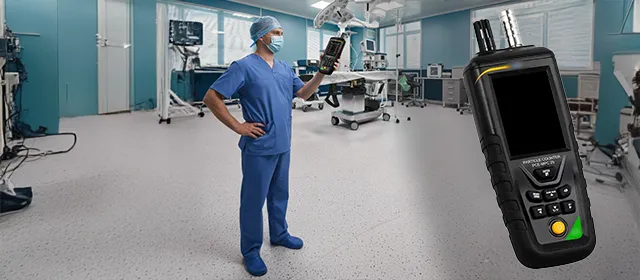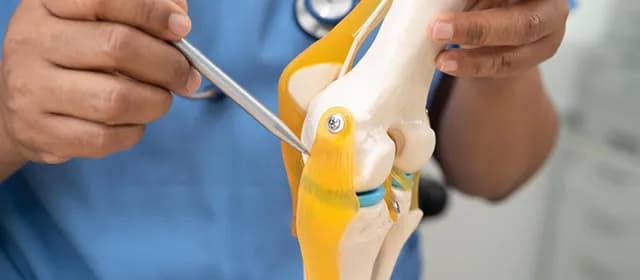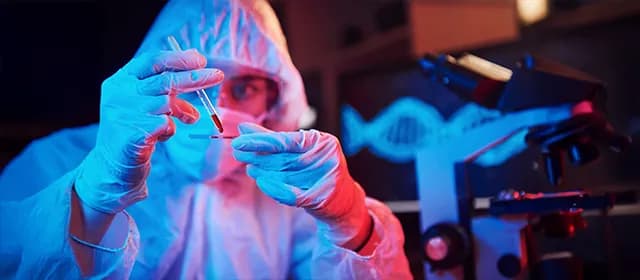Semiconductor manufacturing demands extreme cleanliness and rigorous contamination control. Particle counters serve as critical instruments that detect, quantify, and monitor airborne or suspended particulates within cleanroom environments and process equipment. Their role extends beyond quality assurance into yield improvement, defect mitigation, and process reliability. This article examines the technical functions of particle counters, their integration into semiconductor manufacturing, challenges faced in deployment, and emerging innovations shaping future usage. Kings Research estimates that the global particle counter market size will hit USD 981.3 million by 2032, exhibiting a CAGR of 6.64% from 2025 to 2032.
Importance of Contamination Control in Semiconductor Fabrication
Particulate contamination represents one of the principal yield detractors in semiconductor manufacturing. Semiconductor industry documentation recognizes that trace contaminants degrade device performance and cause defects at nanometer scales. Contamination control forms a fundamental component of cleanroom design, process workflow, and tool maintenance.
Defect levels measured in parts per million or lower can translate into significant yield losses across high-volume wafer fabrication lines. Cleanrooms in semiconductor fabs must comply with strict ISO 14644-1 classes, for example, ranging from Class 4 to Class 6, which impose strict limits on particle counts (for instance, ≤352 to 35,200 particles ≥0.5 µm per cubic foot) depending on the application.
Semiconductor processes rely on ultra-pure gases, chemicals, and controlled environmental flows. Compressed gases entering processes must be sampled and diffused properly to avoid inducing measurement artifacts. High Pressure Diffusers (HPDs) are essential to preserve the integrity of particle measurements in gas sampling, ensuring pressure moderation and preventing sensor damage.
Government regulation of semiconductor emissions focuses on gaseous pollutants and hazardous air emissions (e.g., under U.S. NESHAP rules), but particulate contamination remains a key internal quality control variable rather than a regulated external pollutant. (Source: www.epa.gov)
Technical Principles and Types of Particle Counters
Particle counters operate on optical or light scattering principles to detect particles passing through a sensing volume. Each particle scatters light; the detector counts discrete scattering events and estimates the size distribution based on amplitude. Some advanced designs combine counting and sizing channels to distinguish particle diameters (for example, in ranges 0.1–1 µm, 1–5 µm, etc.).
Airborne particle counters sample ambient or airflow zones; liquid particle counters sample fluids, chemical, or process solutions to detect suspended particulates. The majority of demand in semiconductor fabs falls on air particle counters because cleanrooms and ambient air control are vital during wafer transfers, photolithography, and etch/deposition steps.
Continuous or real-time particle monitoring enables detection of excursions in contamination levels. Some systems integrate networking or wireless monitoring to provide remote alerts and trending dashboards. Sonicu recently launched a wireless particle counter monitoring solution tailored for cleanrooms in manufacturing environments to reduce scrap rates and improve yield.
Similarly, in December 2023, when Phizzle launched “Digital Air,” a software-defined solution that automates data capture and remote operation of air particle counters in ISO / GMP environments, including semiconductor fabs.
How Particle Counters Are Integrated into Cleanrooms, Tools, and Process Flows
Particle counters integrate into multiple facets of fab operations. They monitor cleanroom zones, tool enclosures, gas lines, and exhaust sampling points. Ambient cleanroom measurement ensures that airflow, filter performance, and personnel gowning controls meet required levels. Tool enclosures include built-in particle sensors to detect internal leaks or cross-contamination during process runs. Gas sampling using HPDs links the upstream gas supply purity to downstream wafer exposure.
Trend analysis proves critical. Time-series data enable the identification of periodic spikes, correlation with tool maintenance events, filter changes, or facility disturbances. By analyzing these trends, process engineers can diagnose root causes such as filter degradation, airflow pattern shifts, or module leaks. Real-time alert thresholds trigger investigations before contamination spreads to sensitive processes.
Stakeholder expectations for traceability, auditability, and data integrity require particle counters to support valid calibration, timestamping, version history, and access controls. Many fabs integrate particle counter data streams into their manufacturing execution systems (MES) or statistical process control (SPC) systems, enabling unified dashboards correlating yield, defect density, and contamination metrics.
Deployment must account for spatial placement, sampling flow rates, sensor cross-sensitivity to humidity or pressure, and calibration drift. Environmental factors such as relative humidity, temperature fluctuations, or aerodynamic disturbances can skew readings. Validating performance under nominal ambient conditions is critical to ensure meaningful data.
Yield Protection and Process Optimization Through Effective Particle Counting
Implementation of well-designed particle counting systems yields multiple benefits. Early detection of contamination excursions reduces defect rates and improves yield. Spatial mapping of particle levels across cleanrooms and tools allows optimization of airflow and filter placement. Trend data support predictive maintenance of filters or enclosures before contamination baseline drifts. Integration into MES enables root-cause correlation across process metrics, reducing downtime due to contamination investigations. Wireless or remote systems reduce manual walk-throughs and improve alert responsiveness. In environments where yield margins span fractions of a percentage, even small reductions in defect density translate into large financial gains.
The Key Technical and Operational Challenges Limiting Particle Counter Effectiveness
Measurement reliability remains a challenge. Particle counters sometimes register false counts due to environmental noise, humidity, or flow turbulence. Calibration drift requires periodic validation using certified aerosol standards, adding operational overhead. Some process zones may experience extremely low particulate levels, pushing sensor detection limits at or near background noise. Ensuring representative sampling in complex tool geometries or narrow channels is difficult. HPD design must address pressure differentials and potential dead volumes.
Scaling high-density monitoring across multiple cleanrooms and tools demands substantial infrastructure, network bandwidth, and data storage. Data overload becomes possible if each node streams high-frequency readings; subsequent signal processing and filtering are necessary. Legacy fabs may resist retrofitting counters in closed tool architectures. Additional cost for sensor redundancy, maintenance, and calibration may deter deployment in marginal processes.
Particulate control in downstream processes, especially within advanced nodes (say below 5 nm), pressures particle counters to push detection limits smaller, requiring enhancements in sensitivity, background noise suppression, and firmware algorithms.
Case Study Considerations
A fabrication facility planning to expand to an advanced node (for example, 3 nm or below) faces stricter contamination margins. That facility may adopt a dense mesh of particle counters across tool enclosures, transfer areas, and gas lines. Trend correlation may highlight a filter module nearing the end of life before contamination spikes manifest. The facility might integrate data into MES and SPC to correlate yield degradation with localized particle events, enabling proactive maintenance or retuning of airflow regimes.
In greenfield builds or retrofits, early design stage inclusion of sampling ports, HPD gas diffusers, and optimal sensor placement simplifies later deployment. Sensor redundancy in critical zones ensures detection capability even during maintenance windows. Wireless or cloud-enabled systems reduce cabling complexity and allow real-time remote monitoring across multiple fabs or geographic sites.
Future Directions and Innovations
Expect enhancements in sensor sensitivity, lower detection limits, multi-parameter particle characterization (for example, chemical or optical signature on top of size), and AI-driven anomaly detection. Integration of particle counter outputs with predictive models may allow automated contamination control actions, such as variable airflow control, filter modulation, or tool isolation in response to particle spikes. Cloud and edge computing may facilitate cross-site benchmarking of contamination profiles, identification of best practices, and coordinated calibration strategies.
Software platforms like “Digital Air” represent early steps toward software-defined instrumentation management, reducing human intervention and standardizing data capture and workflows.
Wireless solutions such as those launched by Sonicu suggest a trend toward flexible deployment, easier retrofits, and improved data accessibility.
Emerging ultra-clean process nodes will impose stricter particle thresholds, driving demand for enhanced sensors capable of detecting even sub-micron or molecular contamination events. Greater automation in calibration, sensor drift compensation, and self-diagnostics will reduce operational burdens. Integration of particulate data with process metrology and inline inspection may give holistic views of contamination risk, enabling closed-loop control of environmental conditions.
Conclusion
Particle counters stand as indispensable instruments in semiconductor manufacturing. They support contamination control, yield optimization, and process integrity. Integration with data analytics, networks, and process control systems transforms them from passive monitors into active contributors in achieving high yield and quality goals.
Deployment challenges such as calibration, sampling complexity, and data management persist, but innovation in wireless platforms, software control, and sensor sensitivity promise to raise their effectiveness. As semiconductor technologies push feature sizes downward, the role of particle counters will become even more central. Investments in robust instrumentation, strategic integration, and continuous improvement in measurement capabilities will distinguish fabs that succeed in the high-precision frontier.




